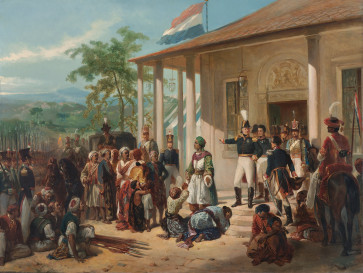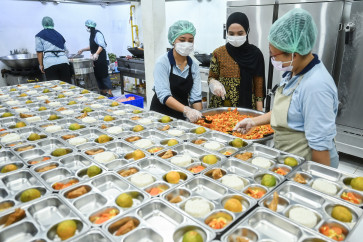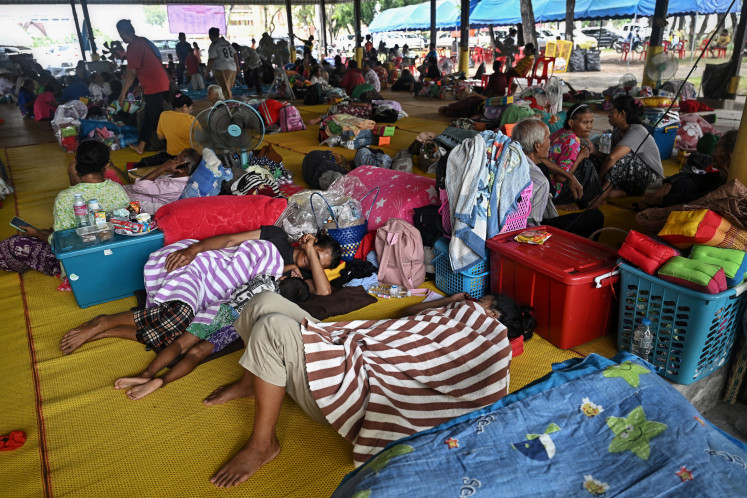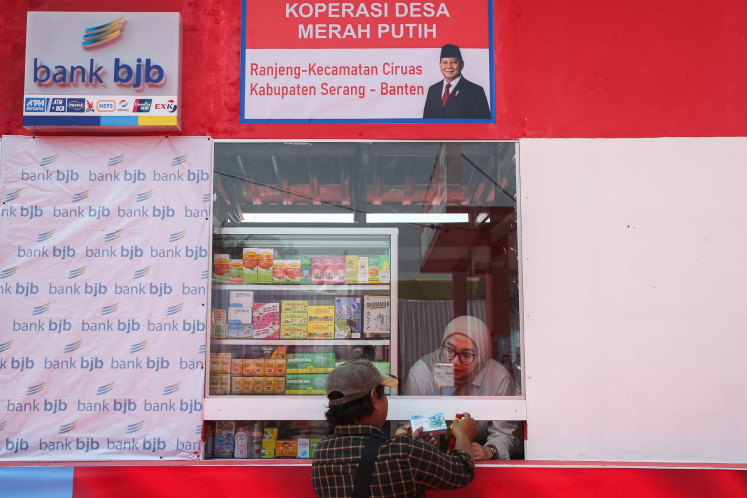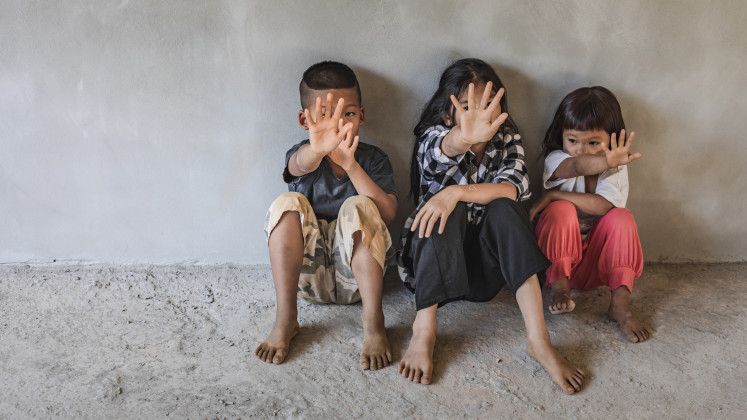Popular Reads
Top Results
Can't find what you're looking for?
View all search resultsPopular Reads
Top Results
Can't find what you're looking for?
View all search resultsFatahillah festival mixes classic and modern wayang
Playtime: A girl holds a wayang kulit (leather puppet) of Gatot Kaca, the flying super-strong hero from the Mahabarata, at the Wayang Indonesia Festival 2014 at Taman Fatahillah in Old Town, West Jakarta, on Saturday
Change text size
Gift Premium Articles
to Anyone
 Playtime: A girl holds a wayang kulit (leather puppet) of Gatot Kaca, the flying super-strong hero from the Mahabarata, at the Wayang Indonesia Festival 2014 at Taman Fatahillah in Old Town, West Jakarta, on Saturday. The three-day puppet festival end on Sunday. (JP/P.J. Leo) (leather puppet) of Gatot Kaca, the flying super-strong hero from the Mahabarata, at the Wayang Indonesia Festival 2014 at Taman Fatahillah in Old Town, West Jakarta, on Saturday. The three-day puppet festival end on Sunday. (JP/P.J. Leo)
Playtime: A girl holds a wayang kulit (leather puppet) of Gatot Kaca, the flying super-strong hero from the Mahabarata, at the Wayang Indonesia Festival 2014 at Taman Fatahillah in Old Town, West Jakarta, on Saturday. The three-day puppet festival end on Sunday. (JP/P.J. Leo) (leather puppet) of Gatot Kaca, the flying super-strong hero from the Mahabarata, at the Wayang Indonesia Festival 2014 at Taman Fatahillah in Old Town, West Jakarta, on Saturday. The three-day puppet festival end on Sunday. (JP/P.J. Leo)
P
span class="caption" style="width: 598px;">Playtime: A girl holds a wayang kulit (leather puppet) of Gatot Kaca, the flying super-strong hero from the Mahabarata, at the Wayang Indonesia Festival 2014 at Taman Fatahillah in Old Town, West Jakarta, on Saturday. The three-day puppet festival end on Sunday. (JP/P.J. Leo)
There were a lot of things going on in the oldest part of Jakarta on Friday evening.
Amid the hustle and bustle of traders selling accessories and miraculous illness cures to the side of Fatahillah Square in Old Town, West Jakarta, troupes of wayang (puppet) masters from different regions in Indonesia attracted the attention of visitors to the area.
It was perhaps the combination of light drizzle and the need for some free nighttime entertainment prior to the World Cup matches being broadcast in the wee small hours that encouraged locals to gather in front of the brightly lit stage in front of the Jakarta History Museum, locally known as the Fatahillah Museum.
Food and drink sellers arrived and laid sheets of tarpaulin on the ground for their customers to sit on, as the folding chairs provided by the event organizer were all occupied.
Suddenly, all eyes were fixed on the opening performance of the Wayang Indonesia Festival, as if those present had fallen under a spell cast by renowned wayang purwa dalang (puppeteer) Ki Purbo Asmoro, who manipulated his wayang kulit (leather puppets) in front of a white screen.
As the oldest-known storytelling culture in the country, puppetry ' which includes a number of different forms ' has been an effective way to convey the teaching of religious, moral and ethical values.
The use of wayang to disseminate information can be found from Sumatra to Kalimantan and from Java to Nusa Tenggara.
This once-dying art has been given a new lease of life since UNESCO recognized wayang as one of the Masterpieces of the Oral and Intangible Heritage of Humanity in 2010.
As part of French-based oil and gas company Total E&P Indonesie's corporate social responsibility (CSR) program, the Total Indonesia Foundation collaborated with the Indonesian Puppeteers Association (Pepadi), the Indonesian Puppetry Society (Sena Wangi) and the Wayang Museum to organize an annual festival, which was launched in 2011.
'Our biggest challenge in preserving wayang is to have it adapt to modernity without losing its authenticity,' said Eddy Mulyadi, chairman of the Total Indonesia Foundation.
This year, the festival is taking place through Sunday at Fatahillah Square. Both traditional and contemporary wayang shows can be found at the festival, including the almost-extinct operettas, Wayang Orang Betawi, Wayang Cirebon and Wayang Topeng Malang.
In appreciation of the young puppet masters and contemporary artists, the festival is also staging some completely new shows, namely Wayang Urban Revolusi, Wayang Bhinneka Tunggal Ika, Wayang Beber Metropolitan and Wayang Joblar, which combine storytelling with music and dance.
To raise the public's appreciation of its cultural heritage, the festival will also host wayang storytelling and wayang coloring competitions for children and a workshop for aspiring puppeteers.
'New lighting and visual effects technology is also being used to give the festival a modern touch,' Sumardi, chairman of the festival's organizing committee, said.
Dewi Sulastri, who is presenting Wayang Orang Swargaloka, said the operetta would be performed with video mapping.
Big screens have been installed around the venue and each show will also be streamed live worldwide on wayangshow.com, and via radio link on andhikamultimediajakarta.blogspot.com.
An additional screen has also been erected to the left of the stage to relay English subtitles.
Visitors can also check out the booths of wayang craftsmen in the bazaar and exhibition, which is open until 9 p.m., or take a tour through the Wayang Museum, which is offering free entry after 3 p.m. while the festival is on.
Pepadi chairman Ekotjipto said the organization was striving to have wayang art and culture included in the school curriculum.
'If we want to preserve wayang as our cultural heritage, then we need to teach the younger generation about it,' he said.
Margono, a wayang shop owner and puppeteer from Surakarta, Central Java, said he had seen a surge in interest in wayang from young children and teenagers at various competitions and training sessions that he had been involved in.
'These children have good skills and creativity, so I'm not worried about the future of wayang,' he said.


